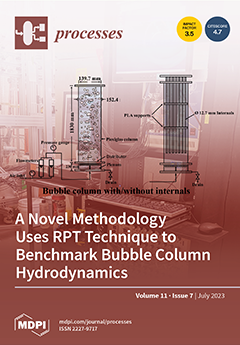Carbon dioxide (CO
2) sequestration plays a crucial role in reducing the levels of atmospheric CO
2 and mitigating the harmful effects of global warming. Among the various CO
2 sequestration technologies, CO
2 marine geological sequestration emerges as a safer and
[...] Read more.
Carbon dioxide (CO
2) sequestration plays a crucial role in reducing the levels of atmospheric CO
2 and mitigating the harmful effects of global warming. Among the various CO
2 sequestration technologies, CO
2 marine geological sequestration emerges as a safer and more efficient alternative compared with traditional terrestrial geological sequestration. This is highly attributed to its expansive potential, safe distance from aquifers, and stable temperature and pressure conditions. This paper reviews and evaluates the main CO
2 marine geological sequestration technologies, including CO
2 sequestrations in shallow marine sediments, CO
2, sub-seabed aquifers, and CO
2-CH
4 replacement. The goal of this paper is to shed light on the mechanism, potential, and challenges of each technology. Given the importance of safety in CO
2 sequestration, this review also explores the potential adverse effects of CO
2 leakage from reservoirs, particularly its impact on marine environments. Finally, we discuss potential development trends in CO
2 marine geological technology.
Full article





